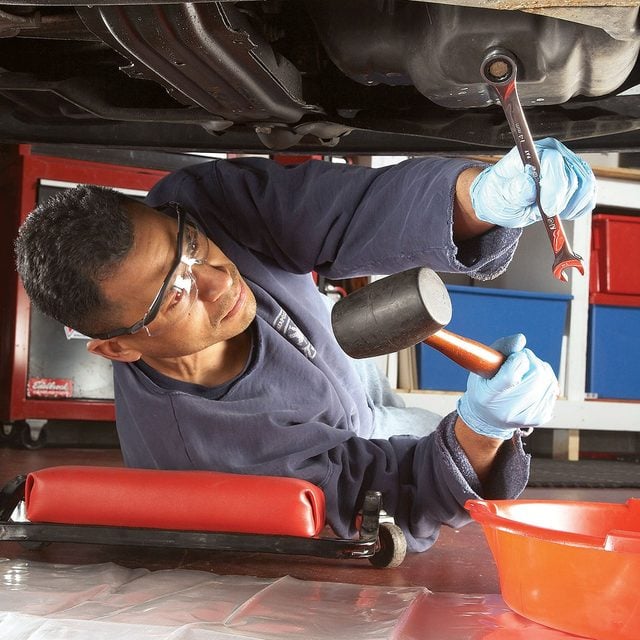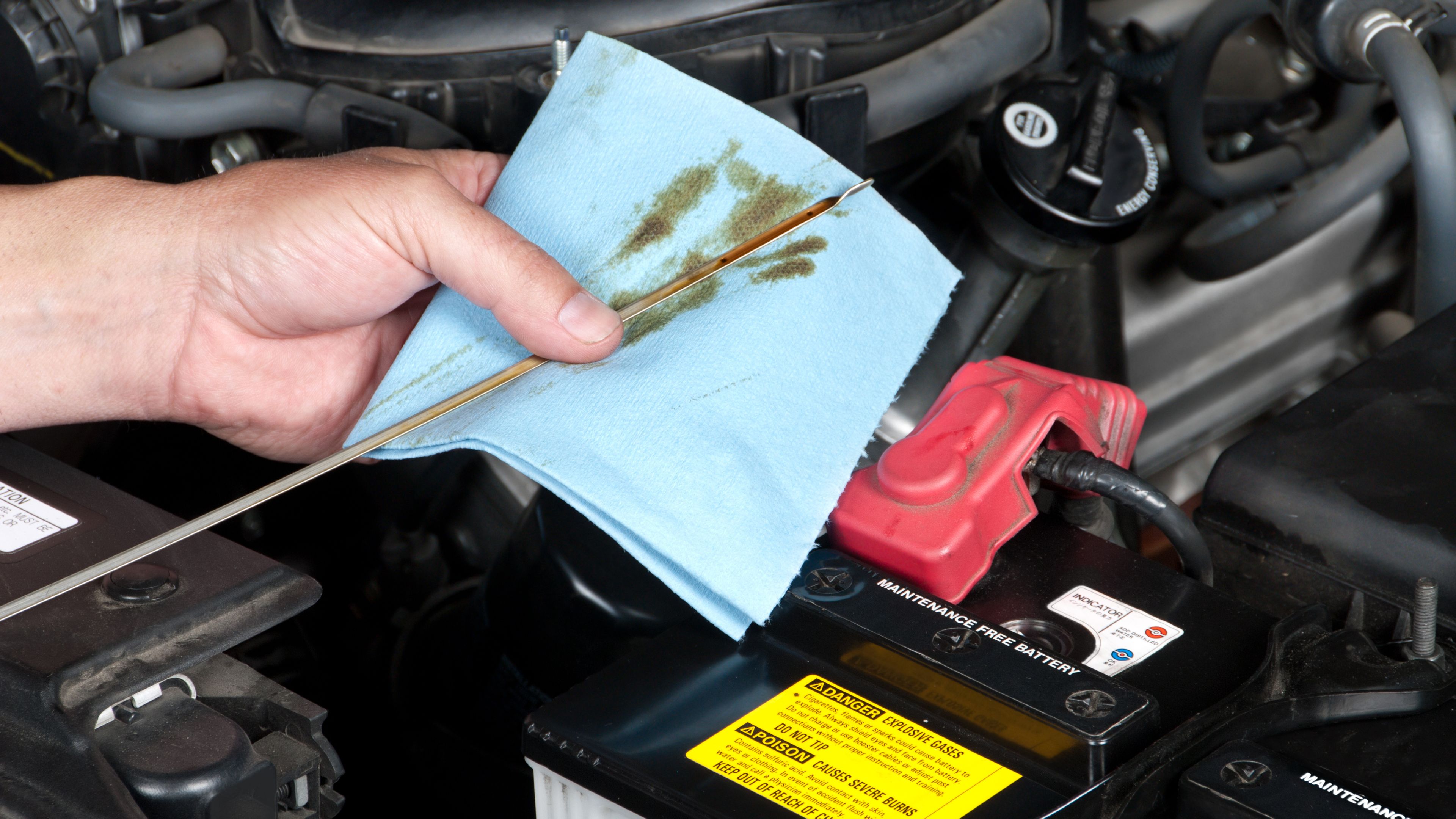Yes, it is possible to change the engine oil yourself. However, it is important to be careful and thorough to avoid damaging the car’s hydraulic components and leading to engine damage.
Using the wrong grade of oil can also affect the engine’s performance. Changing your car’s oil is a routine maintenance task that is vital for the health and longevity of the engine. While it may seem daunting, it is actually a relatively simple job that you can do yourself with the right tools and knowledge.
We will discuss the benefits of changing your oil yourself, the steps involved in the process, and some common mistakes to avoid. By the end of this article, you will be equipped with the information you need to confidently change your car’s oil at home.
Introduction To Diy Oil Changes
Changing your own engine oil can be a beneficial and cost-effective endeavor. By taking on this task, you have the opportunity to gain a better understanding of your vehicle’s maintenance needs. It also allows you to ensure that quality oil and filters are being used. When it comes to safety, it’s important to follow proper procedures and use the right equipment to avoid any accidents. Some common concerns include disposing of used oil and choosing the right oil viscosity for your vehicle. Before starting, make sure to review your car’s manual for specific instructions and safety tips.
Essential Tools And Materials
Changing engine oil yourself can be a simple task if you have the essential tools and materials on hand. The necessary items include the correct oil and filter for your vehicle. It’s crucial to choose the right oil and filter to ensure optimal engine performance and longevity.
Preparation Steps
Changing engine oil yourself is a task that many people can do with the right preparation and tools. To begin, you will need to position your vehicle in a safe and secure location. This could involve using ramps or jack stands to elevate the car off the ground. Once your vehicle is properly positioned, gather your tools and equipment for the oil change. This may include an oil filter wrench, a socket set, a drain pan, and new oil and filter. It’s important to have all the necessary tools on hand before starting the oil change process. By following these preparation steps, you can confidently change your engine oil yourself and save money on professional services.

Credit: www.familyhandyman.com
Draining The Old Oil
Changing engine oil yourself is a task that many car owners can handle. When it comes to draining the old oil, the first step is to locate the drain plug. This plug is typically located on the bottom of the engine oil pan. It is important to ensure proper drainage techniques to ensure that all the old oil is removed.
Once the drain plug is located, simply unscrew it and allow the old oil to drain into a suitable container. It is recommended to wear gloves and use a rag to catch any spills. After the old oil has drained completely, the drain plug can be screwed back in place.
Changing your engine oil yourself can save you time and money. However, it is important to follow proper procedures and dispose of the old oil responsibly. If you are unsure or uncomfortable with the process, it is always best to consult a professional.
Replacing The Oil Filter
Changing the oil filter is an essential part of the DIY engine oil change process. While it is possible to change the engine oil yourself, it is important to be cautious and use the correct grade of oil to prevent any damage to the engine.
| Replacing the Oil Filter |
| Finding the Oil Filter |
| Locating the oil filter can vary depending on your car’s make and model. It is generally located near the engine block, but it can also be found underneath the car. Refer to your owner’s manual to locate the oil filter. |
| Steps for Removal and Installation |
| 1. Use an oil filter wrench to loosen the oil filter and remove it from the engine. |
| 2. Clean the area around the oil filter mounting surface and remove any debris. |
| 3. Apply a thin layer of new oil to the rubber gasket on the new oil filter. |
| 4. Thread the new oil filter onto the engine by hand. Tighten the filter an additional 1/2 to 3/4 turn after it makes contact with the mounting surface. |
| 5. Refill the engine with the recommended amount of oil and check the oil level using the dipstick. |
Changing engine oil yourself can save you time and money. When it comes to replacing the oil filter, it is important to find it first. The oil filter is generally located near the engine block or underneath the car, but it can vary depending on your car’s make and model. Once you have located the oil filter, follow these steps for removal and installation. Use an oil filter wrench to loosen the filter, clean the area, apply a thin layer of new oil to the rubber gasket on the new filter, thread the new filter onto the engine, and refill the engine with the recommended amount of oil. Check the oil level using the dipstick to ensure that you have added the correct amount of oil.

Credit: www.youtube.com
Adding New Oil
Yes, you can change engine oil yourself by following a few simple steps. First, locate the oil drain plug, then remove the old oil and oil filter. Next, install a new oil filter, and finally, add new oil to the engine.
Just be sure to dispose of the old oil properly.
To add new oil to your engine, first, make sure you have the correct type and amount of oil. Check your car’s owner manual for this information. Then, locate the oil filler cap on top of the engine. Remove it and insert a funnel into the hole. Slowly pour the oil into the funnel, checking the dipstick periodically to make sure you don’t overfill. Once you have added the correct amount of oil, replace the oil filler cap securely. Remember to properly dispose of the old oil and oil filter. It is important to add oil correctly to avoid damage to your engine.
Post-change Checks
Post-Change Checks:
After changing the engine oil yourself, it is important to conduct some post-change checks to ensure everything is in order.
Ensuring No Leaks:
Check the area around the drain plug and oil filter for any signs of leaks. Look for any oil spots or puddles on the ground beneath your vehicle. If you notice any leaks, it is crucial to address them immediately to prevent any further damage.
Disposing of Old Oil Responsibly:
Properly disposing of the old oil is essential for environmental safety. You can take it to a local recycling center or an auto parts store that accepts used oil. Do not pour the oil down the drain or throw it in the trash.

Credit: www.hertz.com
Read More: Should You Change Engine Oil? Key Maintenance Tips
Frequently Asked Questions
Is It Hard To Change Oil Yourself?
Changing oil isn’t difficult, but it’s crucial to be careful and thorough. Using the wrong oil grade can harm the car’s engine.
Is It Safe To Change The Oil On Your Car By Yourself?
Yes, it is safe to change the oil on your car by yourself. Although it may seem like a simple task, it is important to be careful and thorough to avoid any mistakes. Using the wrong grade of oil can cause damage to the engine.
It is recommended to follow the proper procedures and guidelines to ensure a successful oil change without damaging any parts of the vehicle.
Can I Change Engine Oil At Home?
Yes, you can change engine oil at home. It’s a simple task, but be careful and use the correct oil grade to avoid damaging the engine.
Can I Put Engine Oil By Myself?
Yes, you can change engine oil by yourself. However, it is important to be careful and thorough, using the correct grade of oil and following the proper procedure outlined in your owner’s manual. If you are unsure or inexperienced, it may be safer to have a professional mechanic perform the oil change.
Conclusion
Changing engine oil yourself is doable, but it requires caution and precision. Using the wrong oil grade can damage your engine. While it may seem simple, professionals are equipped to prevent costly mistakes. Regular oil changes are vital for engine health, and doing it yourself can save time and money when done correctly.
